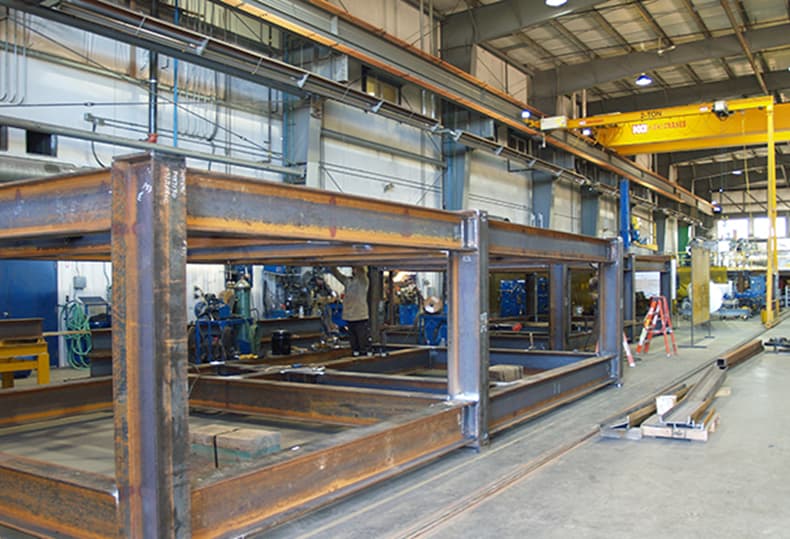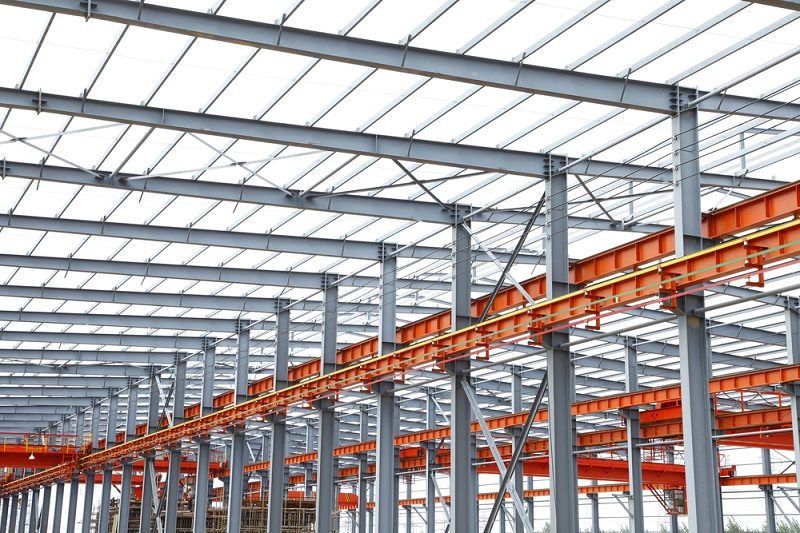Comprehensive Steel Fixing Solutions for Construction Projects
Comprehensive Steel Fixing Solutions for Construction Projects
Blog Article
Comprehensive Analysis of Cutting-Edge Techniques in Steel Manufacture Sector
As the steel construction market proceeds to advance, the integration of advanced strategies has come to be necessary for remaining affordable and meeting the needs of modern-day production standards. In this dynamic market where modern technology plays a crucial duty, recognizing the nuances of these innovative methods is not simply an option however a necessity for those looking to forge ahead in the ever-evolving globe of steel manufacture.
Laser Cutting Innovations
In the realm of steel fabrication, laser cutting developments have transformed the precision and efficiency of metal shaping procedures. By using the power of focused laser light beams, producers can now achieve exceptional levels of precision when cutting through different sorts of steels. This modern technology makes it possible for intricate designs to be implemented with marginal product wastefulness, making it a cost-efficient remedy for sectors needing high precision parts.
One of the key advantages of laser cutting is its ability to take care of a large range of materials, consisting of stainless-steel, light weight aluminum, and carbon steel, effortlessly. The procedure creates clean, burr-free sides, getting rid of the demand for extra finishing actions. Additionally, the non-contact nature of laser reducing minimizes the risk of product contamination, resulting in better end products.
Additionally, laser cutting devices can be programmed to make swift, precise cuts, significantly reducing production time contrasted to conventional reducing methods. This speed and precision make laser reducing especially ideal for automation settings where effectiveness is critical. As technology remains to advancement, laser cutting is positioned to play an increasingly crucial duty in the steel construction sector.

CNC Machining Innovations
The development of CNC machining modern technologies has actually ushered in a brand-new era of accuracy and effectiveness in the steel fabrication market. Computer System Numerical Control (CNC) equipments have changed steel manufacture by offering unrivaled precision and repeatability in the manufacturing process. metal fabrication melbourne. One of the essential advancements in CNC machining is the assimilation of advanced software application systems that allow real-time tracking and modifications, bring about enhanced productivity and top quality control
Furthermore, the advancement of multi-axis CNC equipments has permitted the fabrication of complex steel parts with detailed designs that were previously challenging to create. These machines can perform a broad range of machining operations, consisting of milling, boring, turning, and grinding, all with high levels of accuracy.
Moreover, the incorporation of automation and robotics in CNC machining has structured manufacturing procedures, reduced lead times, and decreased the margin of error. This integration of advanced technologies not only enhances performance but likewise makes sure constant quality across all fabricated steel components. To conclude, CNC machining technologies remain to drive advancements in the steel fabrication market, setting brand-new requirements for accuracy and efficiency.
Automated Welding Technologies
Automated welding modern technologies have actually revolutionized the steel fabrication market, improving efficiency and accuracy in the welding process. These innovative modern technologies make use of computer-controlled systems to automate the welding process, leading to greater efficiency levels and boosted weld high quality. Among the key advantages of automated welding is the capacity to perform complex welds with constant precision, decreasing the chance of errors and remodel.
Robot welding systems are at the leading edge of automated welding technologies, providing unparalleled rate and precision. These systems can handle a vast range of welding jobs, from easy to detailed, easily (Alpha reo). By making use of advanced sensing units and software, robotic welders can adjust to variations in material and joint geometry, ensuring an attire and reliable weld
Additionally, automated welding innovations enhance workplace safety and security by reducing the exposure of human welders to harmful fumes and intense warmth. As the steel construction industry continues to evolve, incorporating automated welding technologies will certainly be essential for companies seeking to remain competitive and meet the growing needs for premium welded products.
Robotics Integration in Manufacture
Making use of robotic systems in fabrication processes has ended up being a crucial strategy for boosting performance and accuracy in contemporary manufacturing atmospheres. Robotics combination in steel construction supplies a myriad of advantages, consisting of raised productivity, improved quality assurance, and enhanced precaution. These advanced robotic systems are geared up with sophisticated sensing units and programs capabilities, allowing them to execute complex tasks with a high degree of precision and repeatability.
One of the crucial advantages of robotics combination in steel construction is the ability to automate recurring jobs, such as product handling, reducing, welding, and steel fabricators melbourne assembly procedures. This not only speeds up manufacturing cycles however also reduces the risk of human mistake, bring about greater general product top quality. In addition, robotics can operate 24/7, considerably enhancing production output and meeting tight project deadlines.

3D Printing in Steel Production
Having transformed the steel construction sector via robotics assimilation, the growing expedition of 3D printing in steel production is poised to further advancement the world of modern production techniques. 3D printing, also understood as additive production, provides extraordinary design freedom and complexity, enabling the creation of intricate steel frameworks that were previously unattainable through typical manufacturing methods. By utilizing computer-aided style (CAD) software, suppliers can specifically regulate the layer-by-layer deposition of steel product, causing get rid of enhanced capabilities and geometries.
Among the crucial advantages of 3D printing in steel production is its ability to lower material waste substantially. Unlike subtractive production processes where excess product is trimmed away, 3D printing just uses the required amount of steel needed for the last component. This performance not just leads to cost savings but also lines up with lasting manufacturing techniques by minimizing ecological influence.
Additionally, 3D printing makes it possible for fast prototyping and modification, permitting the manufacturing of tiny sets of intricate steel parts with brief preparations. As the modern technology remains to grow and end up being extra accessible, its combination right into mainstream steel fabrication processes is anticipated to drive technology and efficiency across the market.
Verdict
Finally, the steel construction industry has actually seen considerable developments in techniques such as laser cutting, CNC machining, automated welding, robotics assimilation, and 3D printing. These sophisticated innovations have changed the means steel products are made, causing enhanced cost-effectiveness, precision, and performance. Continued financial investment in these ingenious techniques is vital for the market to remain competitive and fulfill the demands of modern-day production processes.
As the steel fabrication industry proceeds to progress, the combination of sophisticated techniques has become vital for remaining affordable and satisfying the needs of modern-day production criteria.One of the vital benefits of laser cutting is its capacity to take care of a wide range of materials, consisting of stainless steel, light weight aluminum, and carbon steel, with convenience.Automated welding modern technologies have actually changed the steel manufacture sector, boosting performance and accuracy in the welding process.Having transformed the steel fabrication industry through robotics assimilation, the expanding expedition of 3D printing in steel production is poised to further advance the world of modern-day production methods.In conclusion, the steel fabrication sector has actually seen considerable developments in techniques such as laser cutting, CNC machining, automated welding, robotics assimilation, and 3D printing.
Report this page